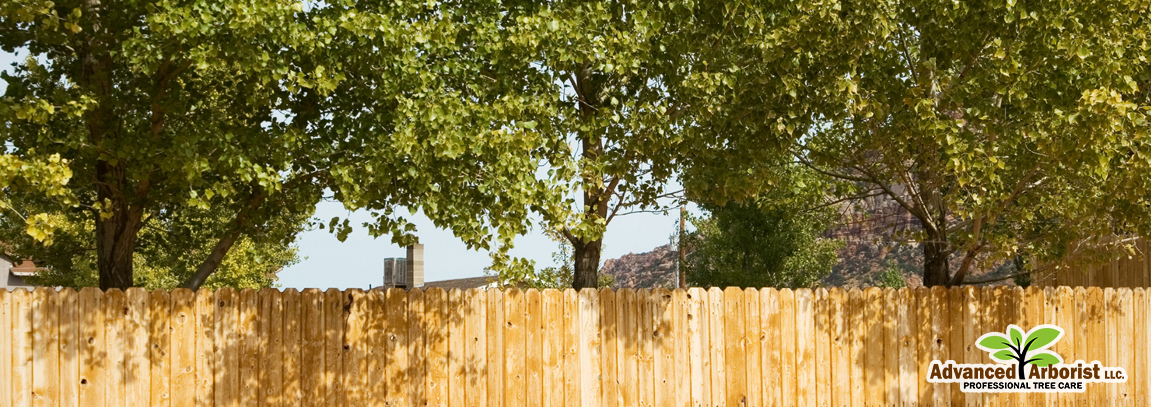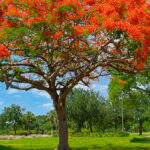Understanding Florida Tree Trimming Laws: Your Guide as a Homeowner
Who is responsible if my tree falls on my neighbor’s house in Florida?
Can I trim my neighbors tree on my property?
If the branches or roots are dead, or a dead tree falls onto the adjoining landowner’s property, then the landowner of the property where the tree was originally located may be responsible. If a live tree falls onto the adjoining landowner’s property, then the adjoining landowner is responsible for any damages.
————————————————————————————————
I have told many people that there are three primary things that cause disputes between neighbors — trees, kids, and dogs — and I can only help them with the first one. Over the course of my arborist career, I have been involved in numerous disputes between neighbors over the pruning, removal and even poisoning of trees which are on or near property lines shared by two neighbors.
Florida law allows an adjoining property owner to trim the tree to his/her property line. However, trimming is prohibited if it requires access to the neighbor’s property or if it will destroy the tree. Therefore, permission must be granted by the neighbor to allow access to the neighbor’s property.
However, as an arborist, I realize that the trees cannot always be properly pruned by simply going to the property line. Improper pruning can leave branch stubs which lead to sprouting and improper sealing over of the pruning cuts. Therefore, it is best to consult with the neighbor and discuss the situation before taking saw in hand. Of course, if the neighbor does not allow encroachment onto their property, there is no choice but to prune to the property line.
As an arborist serving the vibrant communities of Florida, it’s crucial to understand the legal implications surrounding tree trimming, especially when it comes to trees extending past property lines. Florida’s unique ecosystem and diverse landscapes mean that tree care regulations can vary, making it essential for homeowners to be well-informed to avoid legal complications. In this guide, we’ll delve into the specifics of Florida law regarding trimming trees that encroach upon your property and offer practical advice for navigating these situations.
- Know Your Rights and Responsibilities:
- Florida law allows homeowners to trim trees up to the property line, regardless of where the tree trunk is located.
- However, it’s essential to exercise caution and avoid damaging the neighbor’s tree or causing harm that could lead to legal disputes.
- Communication Is Key:
- Before taking any action, open communication with your neighbor is vital. Discuss your concerns about the overhanging branches or roots in a polite and respectful manner.
- Clarify your intentions to trim the tree and explain how it can benefit both parties by reducing potential hazards and maintaining property aesthetics.
- Understanding Property Boundaries:
- It’s essential to know precisely where your property line lies before initiating any tree trimming activities.
- Consult property surveys or hire a professional surveyor if necessary to avoid unintentionally encroaching on the neighbor’s property.
- Seek Professional Advice:
- If you’re unsure about the best approach to trimming the tree or if it requires significant pruning, consider consulting with a certified arborist.
- An arborist can assess the tree’s health, provide guidance on proper trimming techniques, and ensure compliance with local regulations.
- Familiarize Yourself with Local Regulations:
- While Florida law generally permits homeowners to trim trees to the property line, specific local ordinances or homeowner association rules may impose additional restrictions.
- Check with your city or county government to understand any regulations or permit requirements before proceeding with tree trimming.
- Document the Process:
- Keep records of all communications with your neighbor regarding tree trimming discussions, including any agreements reached.
- Take before and after photos of the tree to document the extent of the trimming and demonstrate that it was conducted responsibly.
- Respect Wildlife Habitat:
- Florida’s diverse ecosystem supports various wildlife species that may inhabit trees on your property or your neighbor’s.
- Take precautions to avoid disturbing nesting birds, bats, or other wildlife during the trimming process, as disturbing protected species could result in legal consequences.
Navigating tree trimming laws in Florida requires a combination of legal knowledge, communication skills, and respect for the environment. By understanding your rights and responsibilities as a homeowner, communicating effectively with your neighbor, and following proper procedures, you can ensure that tree trimming activities are conducted legally and responsibly. Remember, when in doubt, seek guidance from certified arborists or legal professionals to avoid potential disputes or legal ramifications.
For exceptional tree services tailored to your needs , contact us. Our team of certified arborists is committed to delivering top-notch tree care solutions.




